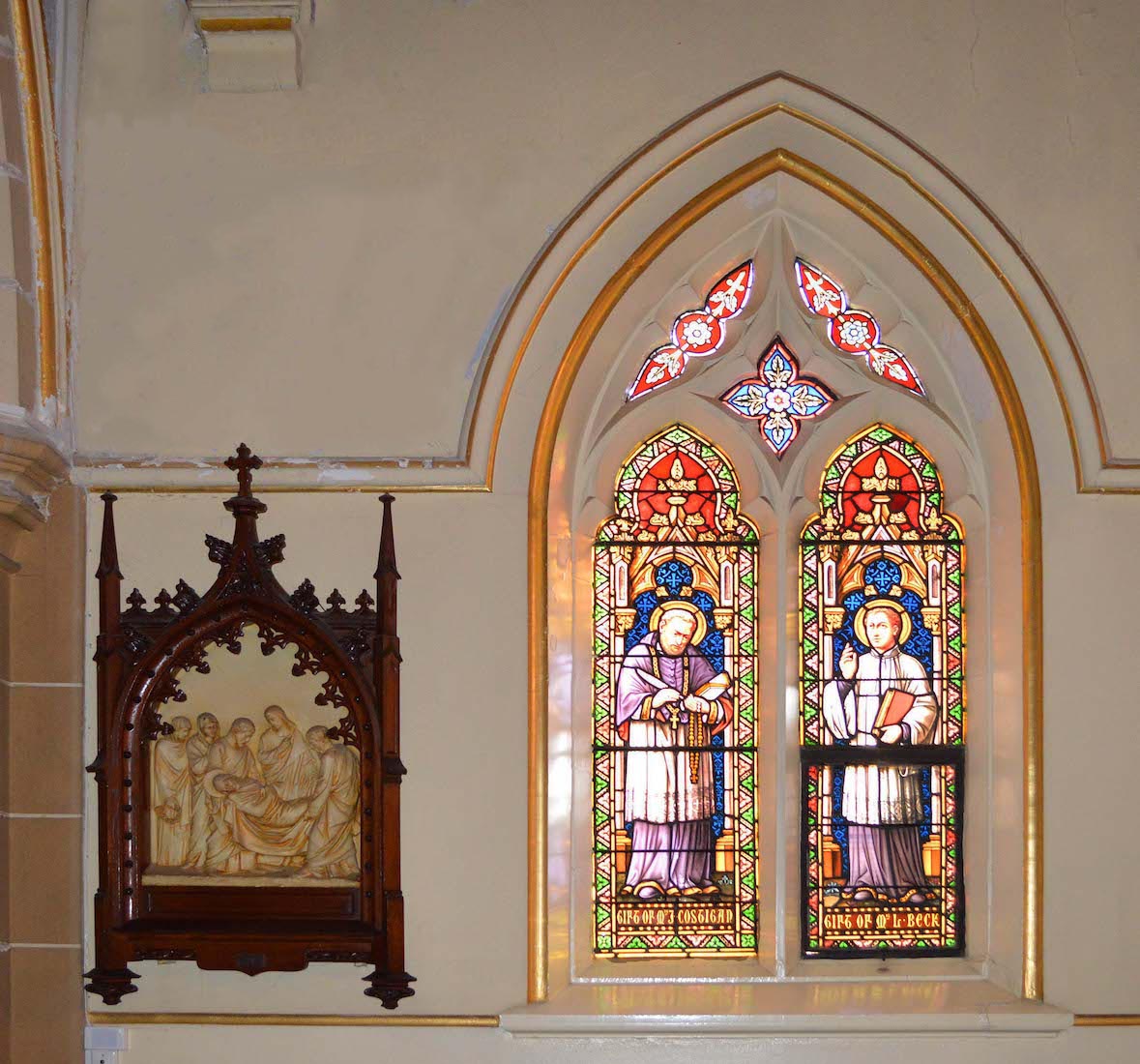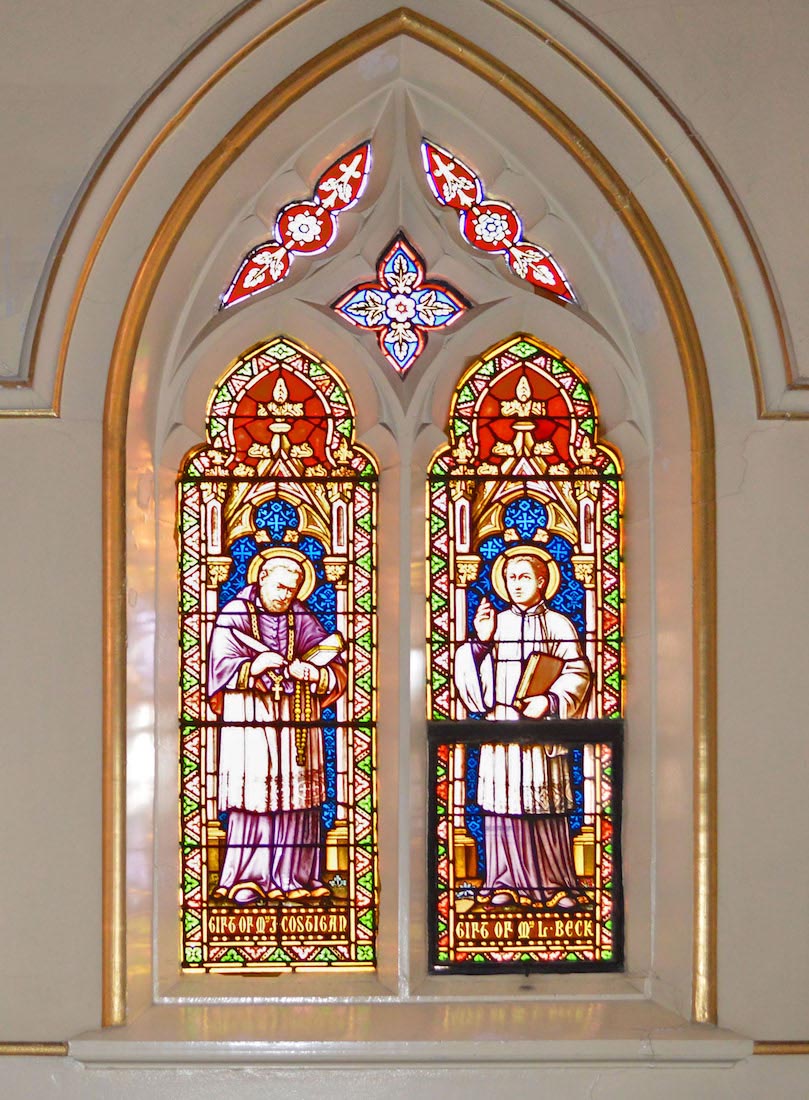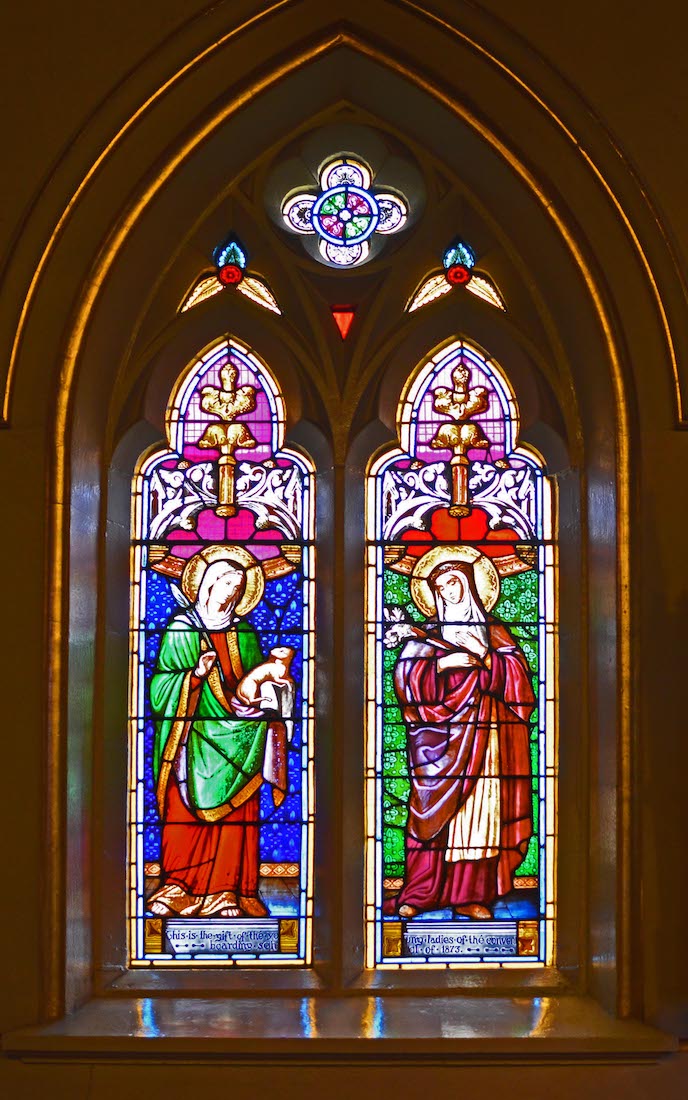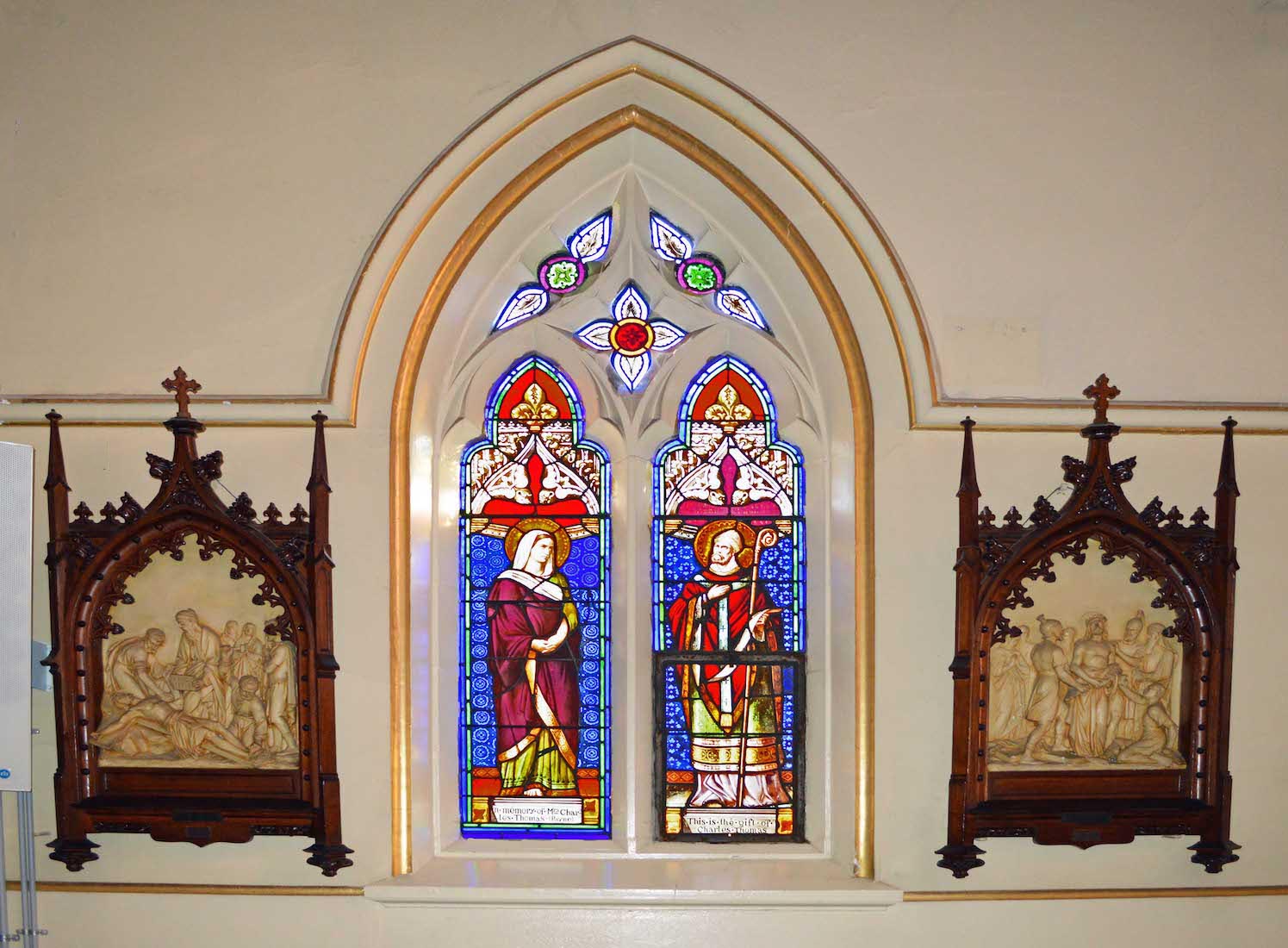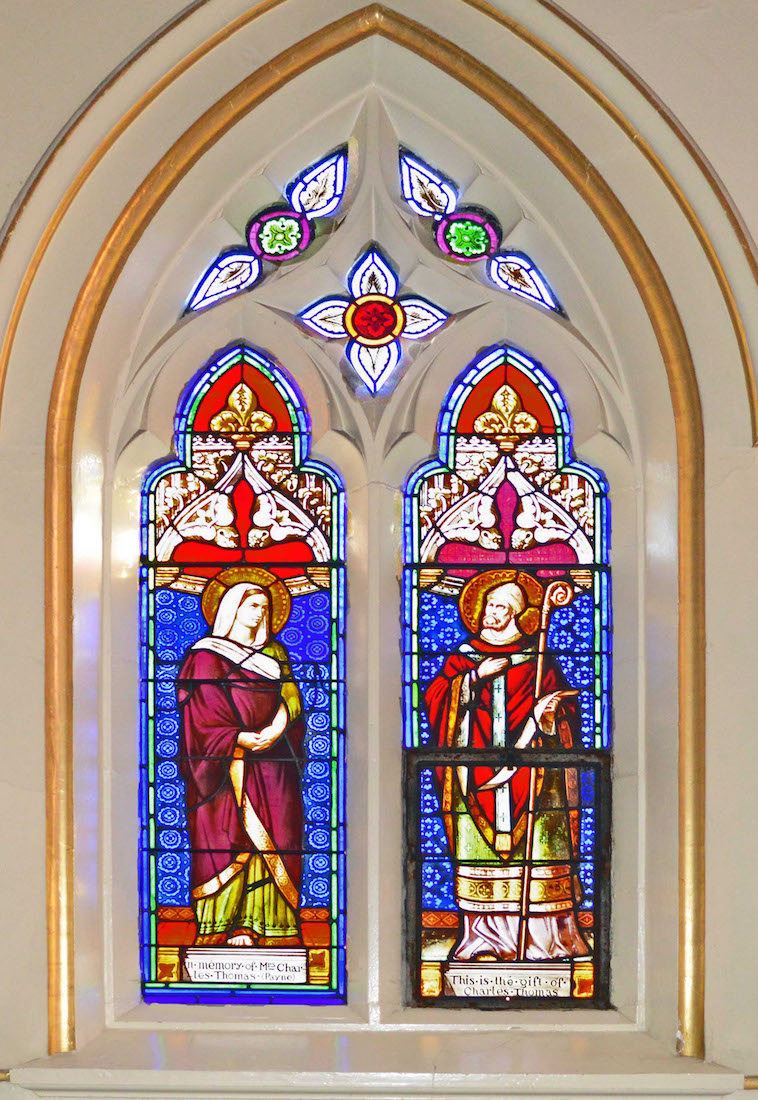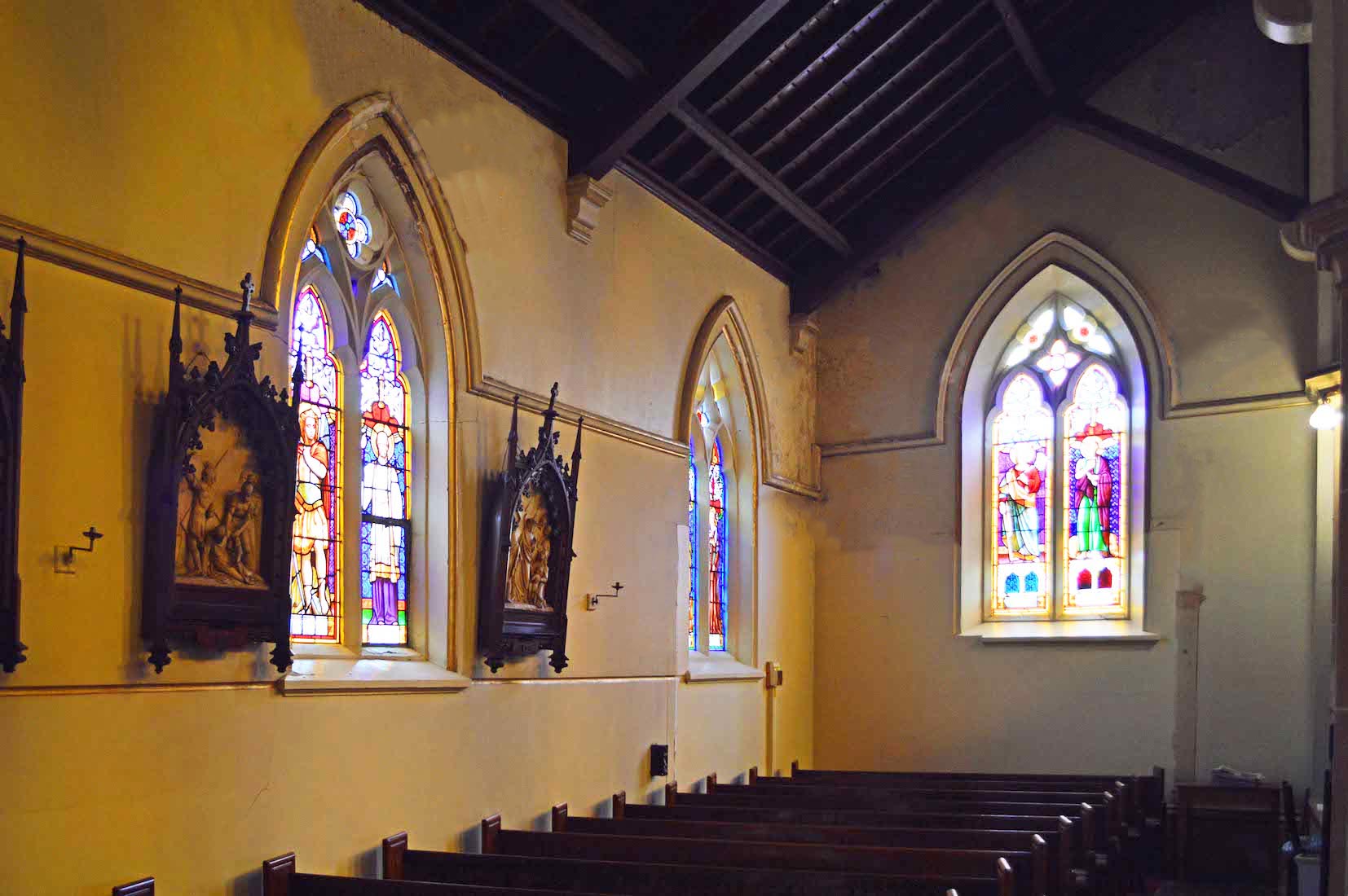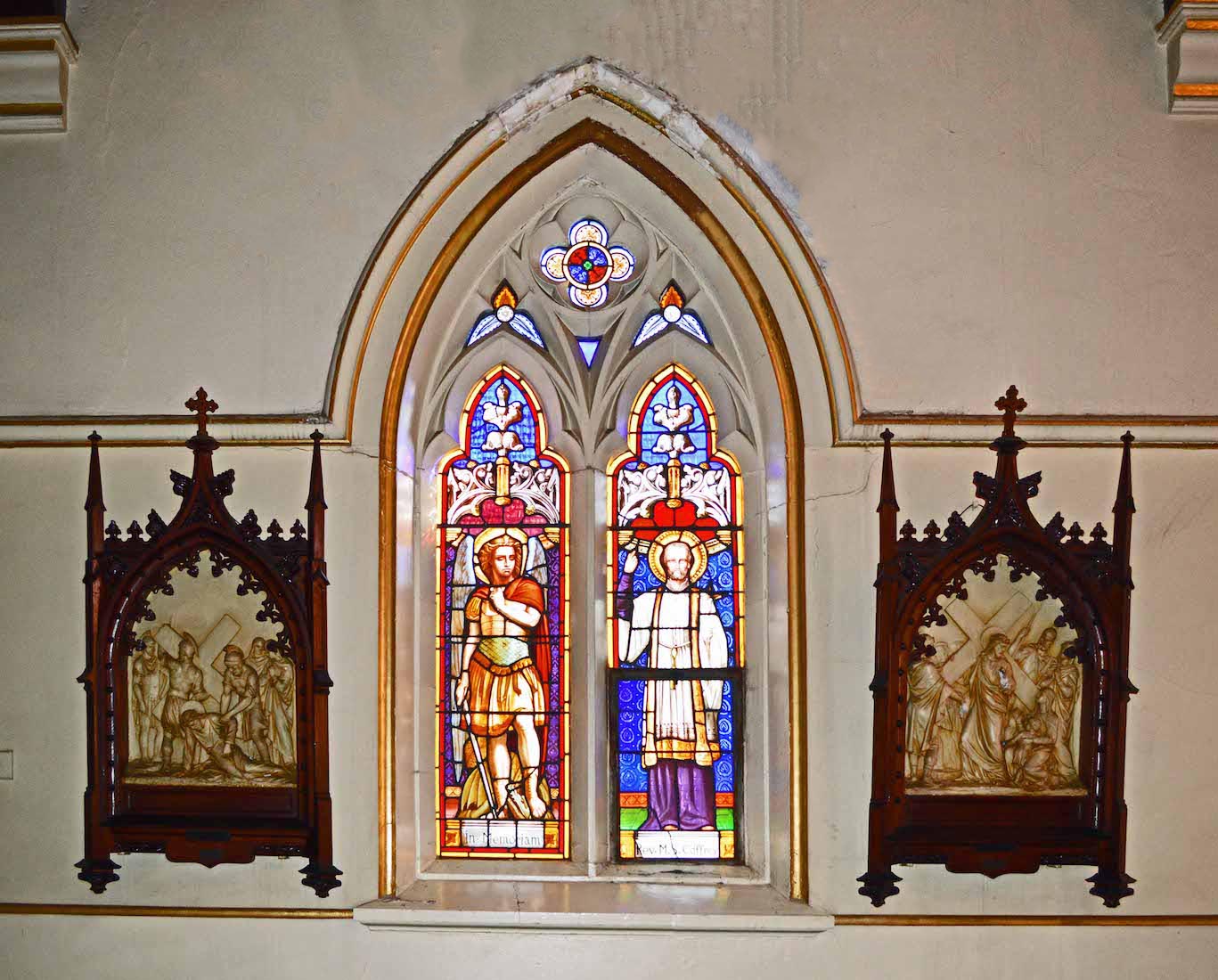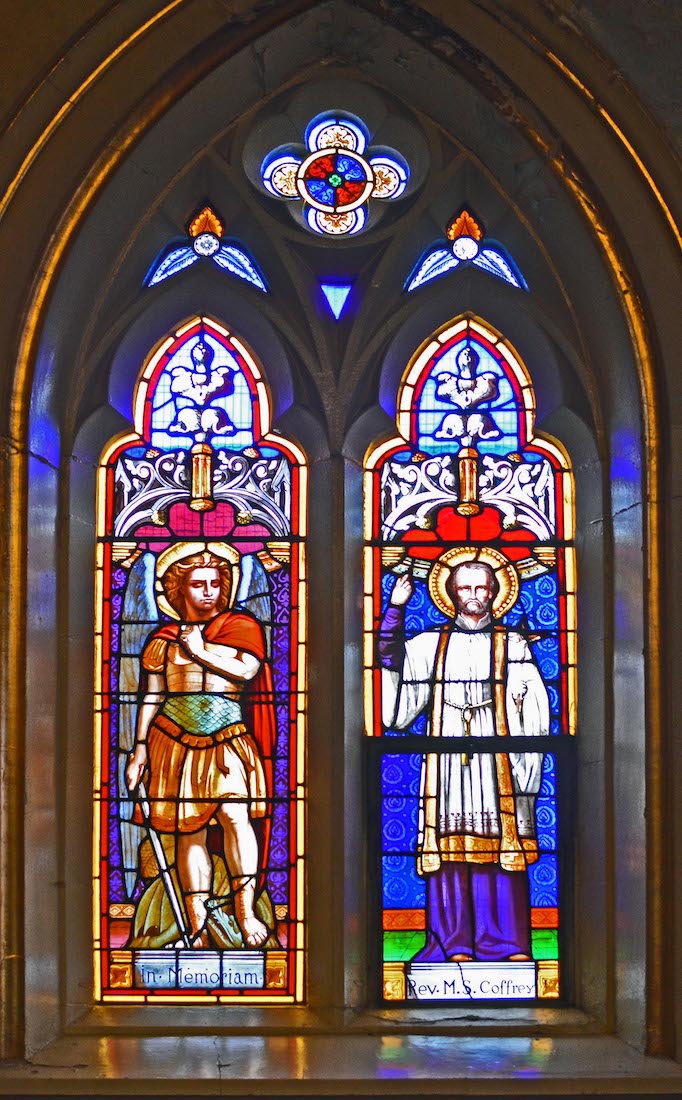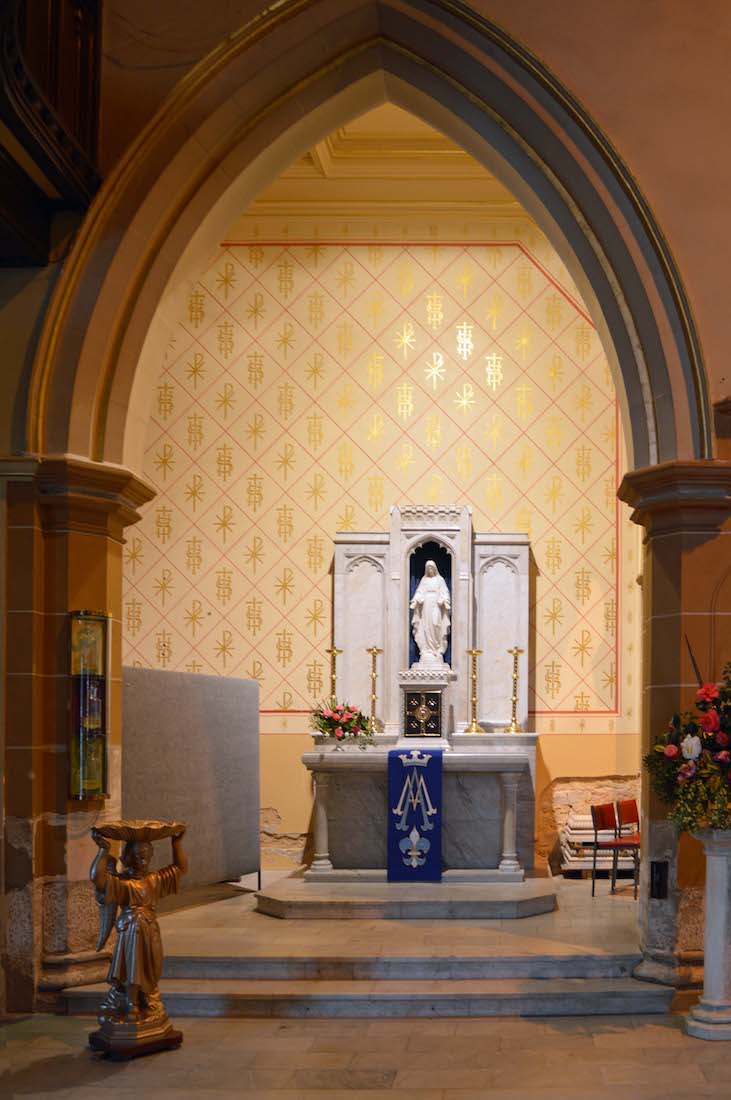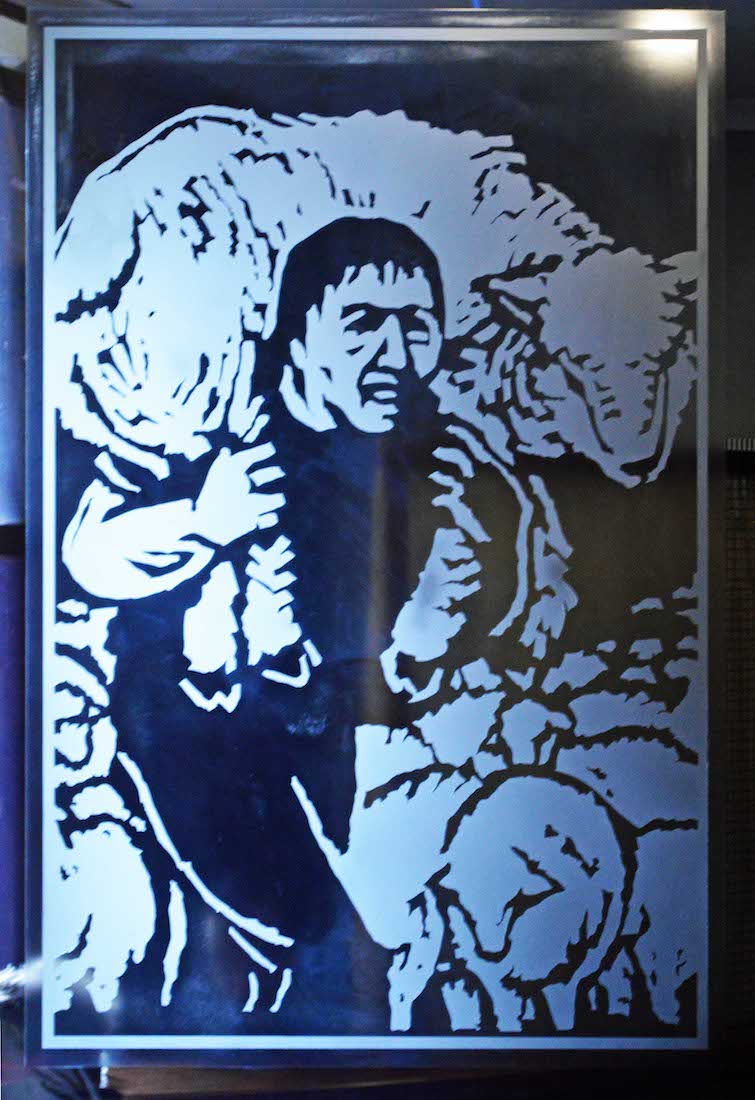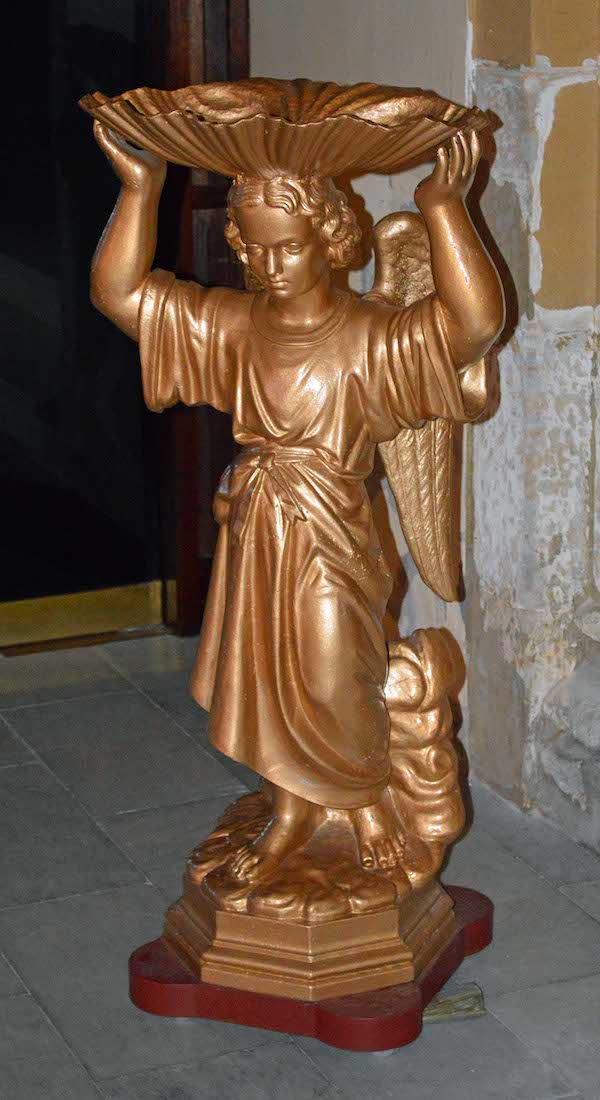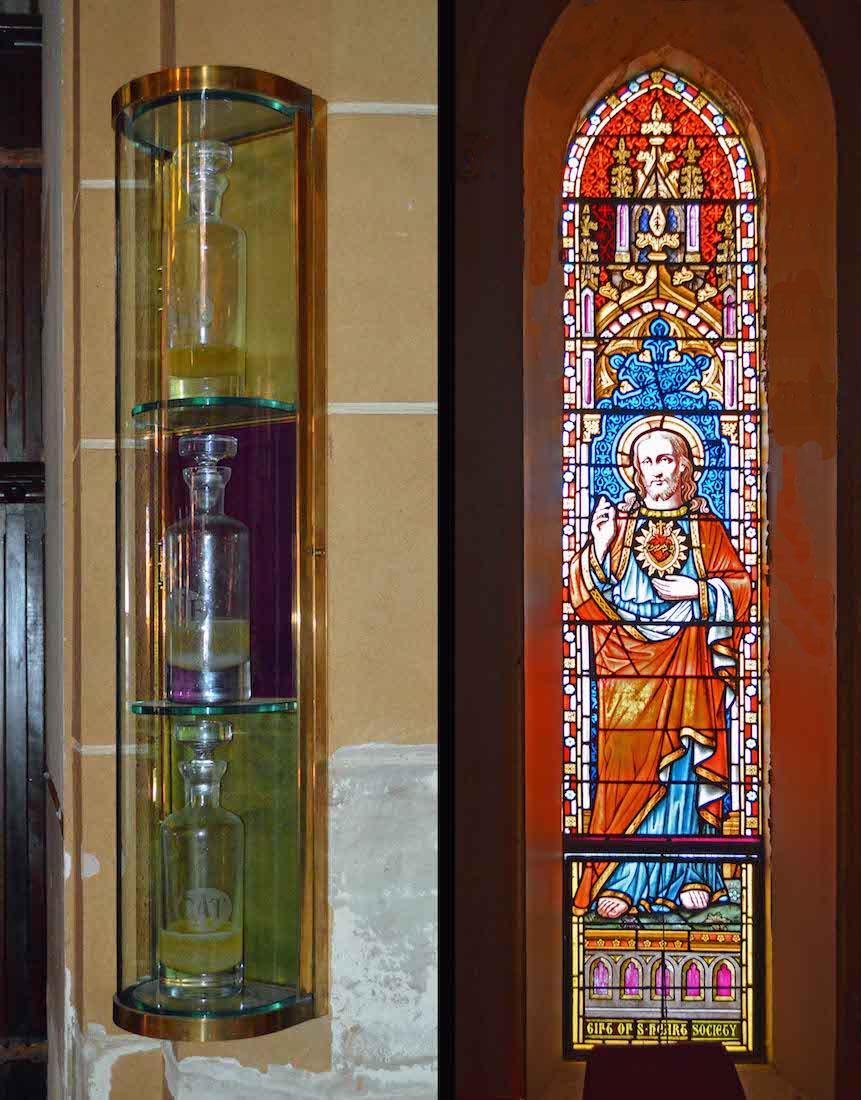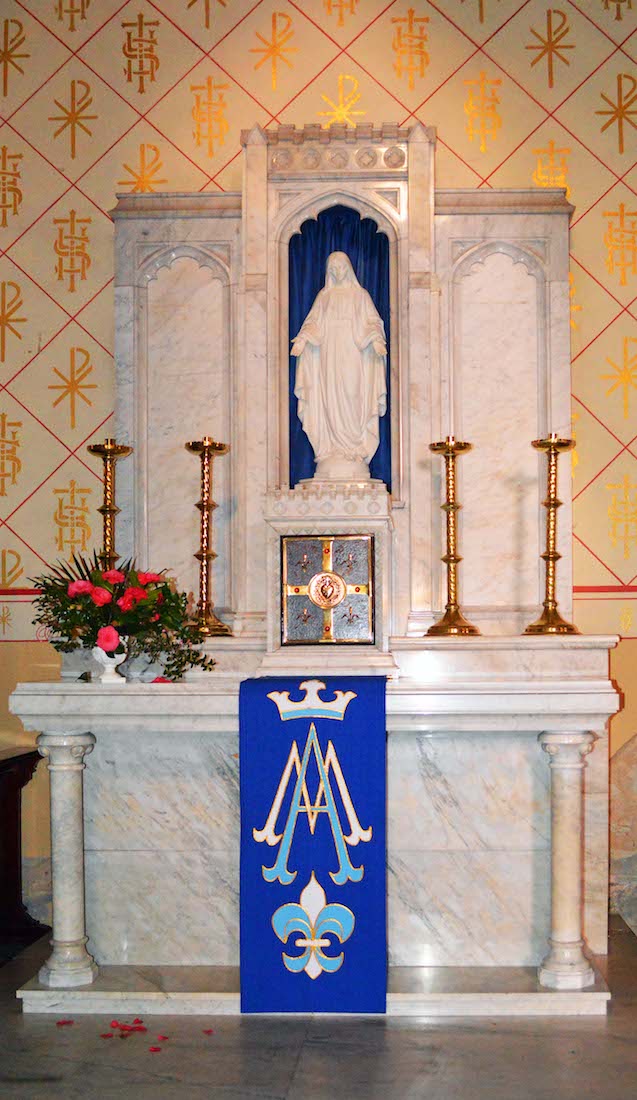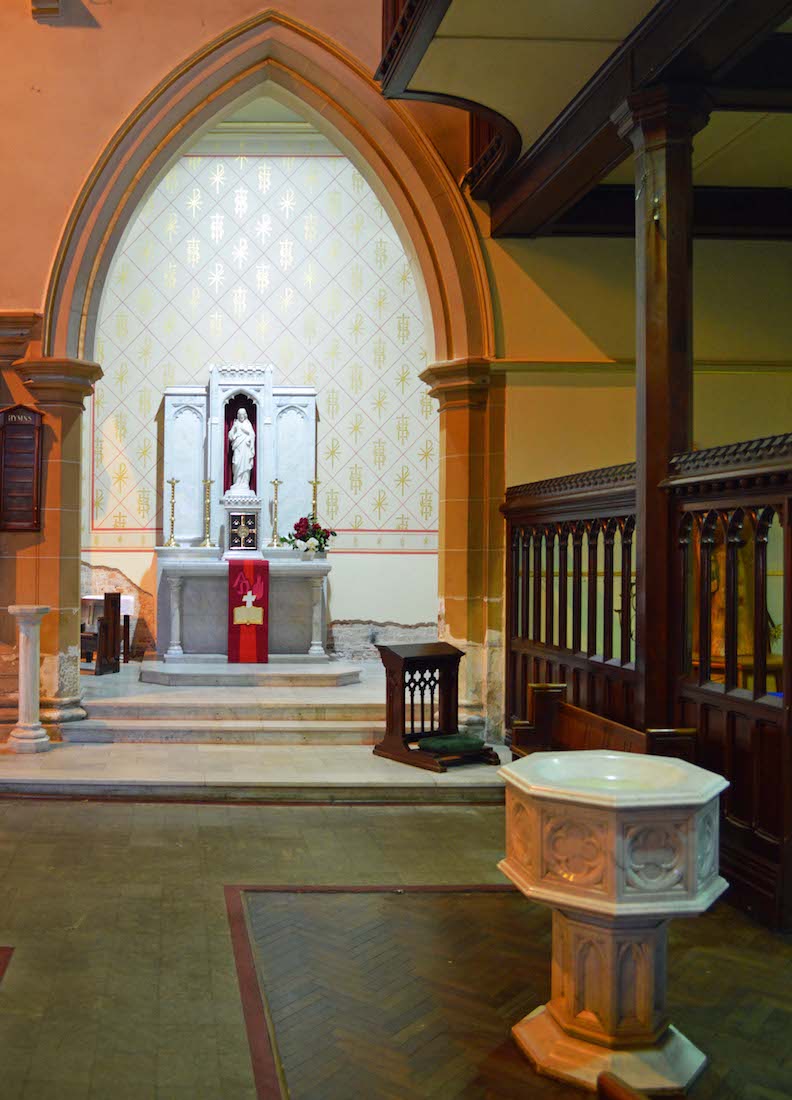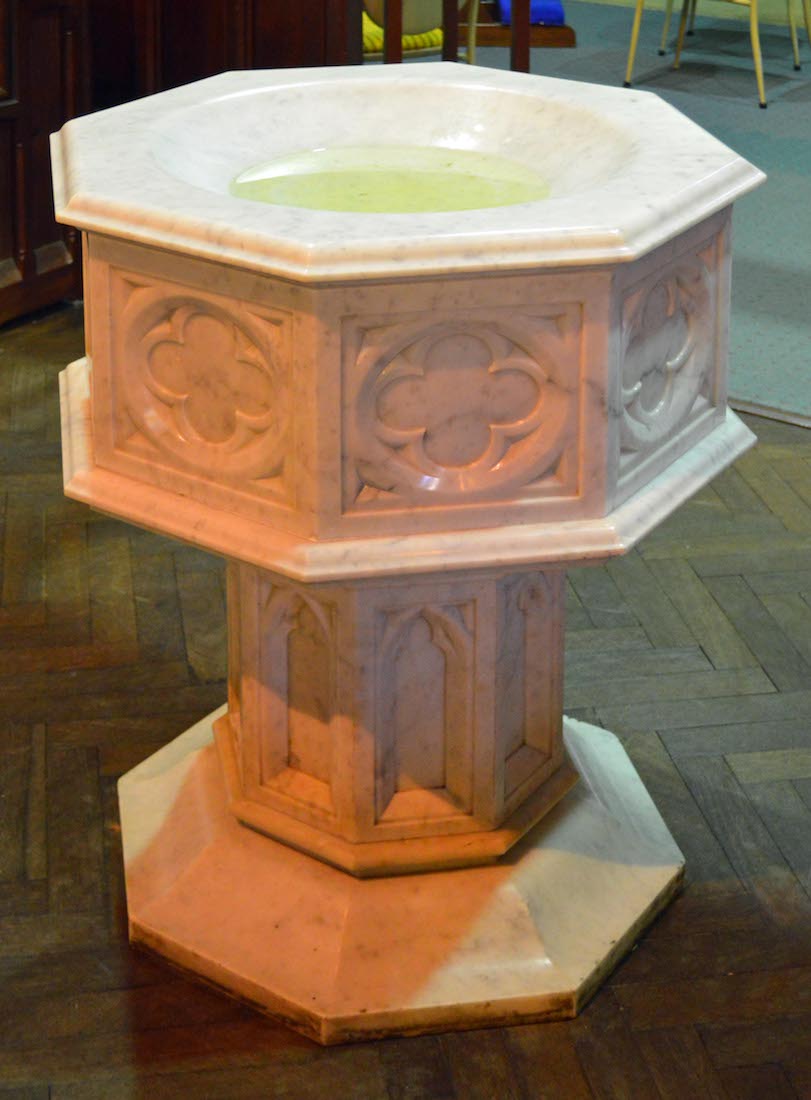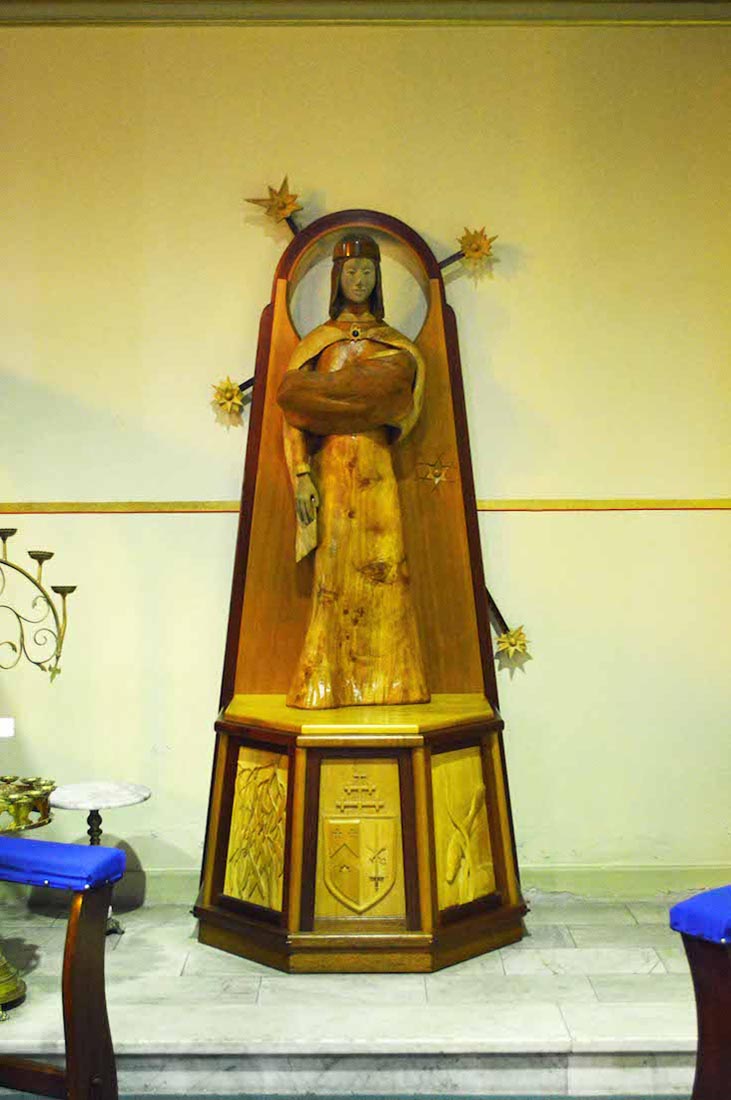
The focal point of this chapel is a carved statue of Mary holding a wrapped baby Jesus. The Southern Cross is displayed behind. Below are three carved panels, with a branch of wattle (eucalypt?) at left, an Aboriginal tool(?) at right, and the Mary, Queen of Apostles crest at centre. INDEX
42. HIGH WINDOWS

Above the Southern nave aisle arch is a high window with the main panels representing St Peter and St Paul. A mirror image of this window appears on the North side.
43. SOUTH NAVE EAST
The array of stained glass windows and Stations of the Cross which we noted on the North wall is repeated here.
44. SOUTH NAVE WALL V
This Station of the Cross is • XIV Jesus is laid in the tomb.
45. SOUTH NAVE WINDOW V
These windows depicting two unnamed saints were the gift of Mrs J Costigan (left) and Mrs L Beck (right).
46. SOUTH NAVE WALL IV
The two Stations of the Cross here depict at left, • XIII Jesus is taken down from the Cross, and right, • XII Jesus dies on the Cross.
47. SOUTH NAVE WINDOW IV
These windows were the gift of the young ladies of the Convent Boarding School of 1873. The depicted saints are unnamed, but may be St Agnes at left, and Catherine of Siena at right.
48. SOUTH NAVE WALL III
These next two Stations of the Cross show • XI Jesus is nailed to the Cross, • X Jesus is stripped of his garments.
49. SOUTH NAVE WINDOW III
The left window is in memory of Mrs Charles Thomas (Payne); the right window (and presumably both windows) is the gift of Charles Thomas. It is unclear which saints are shown here.
50. SOUTH WEST NAVE
The remaining nave windows and Stations of the Cross are shown in this view of the South West nave.
51. SOUTH NAVE WALL II
The next Stations of the Cross are • VII Jesus falls for the second time; • VIII Jesus meets the women of Jerusalem.
52. SOUTH NAVE WINDOW II
These windows are given in memoriam Rev. M. S. Coffrey. The figure at left may well be a young St George or Archangel Michael.
53. SOUTH WEST WINDOWS
The inscriptions on these windows are from left: Pray for John Kelly of Yass; St Columba; This is the gift of the Literary Association (showing St Joseph, and St Mark).
55. SCREEN
The screen window shows the Good Shepherd carrying a sheep of His flock. This illustrates a parable of Jesus.
56. CHERUB
This stylish golden cherub carries a stoup – a basin for holy water.
57. OILS AND CHAPEL WINDOW
Catholic cathedrals usually have a display of three Holy Oils. These are: The Oil of Catechumens used in Baptism; The Holy Chrism used in Confirmation and consecration; and the Oil of the Sick used in Unction. The placing of the Sacred Heart window suggests that the two front chapels were originally on opposite sides of the Cathedral.
58. LADY CHAPEL ALTAR
The marble chapel altar features a Mary banner, and the colour dark blue symbolizing purity. The statue of Mary is placed above a square tabernacle.
59. BLESSED SACRAMENT CHAPEL
The Blessed Sacrament Chapel is on the other (South) side of the Sanctuary. We notice another baptismal font in the foreground.
60. SECOND BAPTISMAL FONT.
This font is not as detailed as the first font we saw, and is less attractive.



